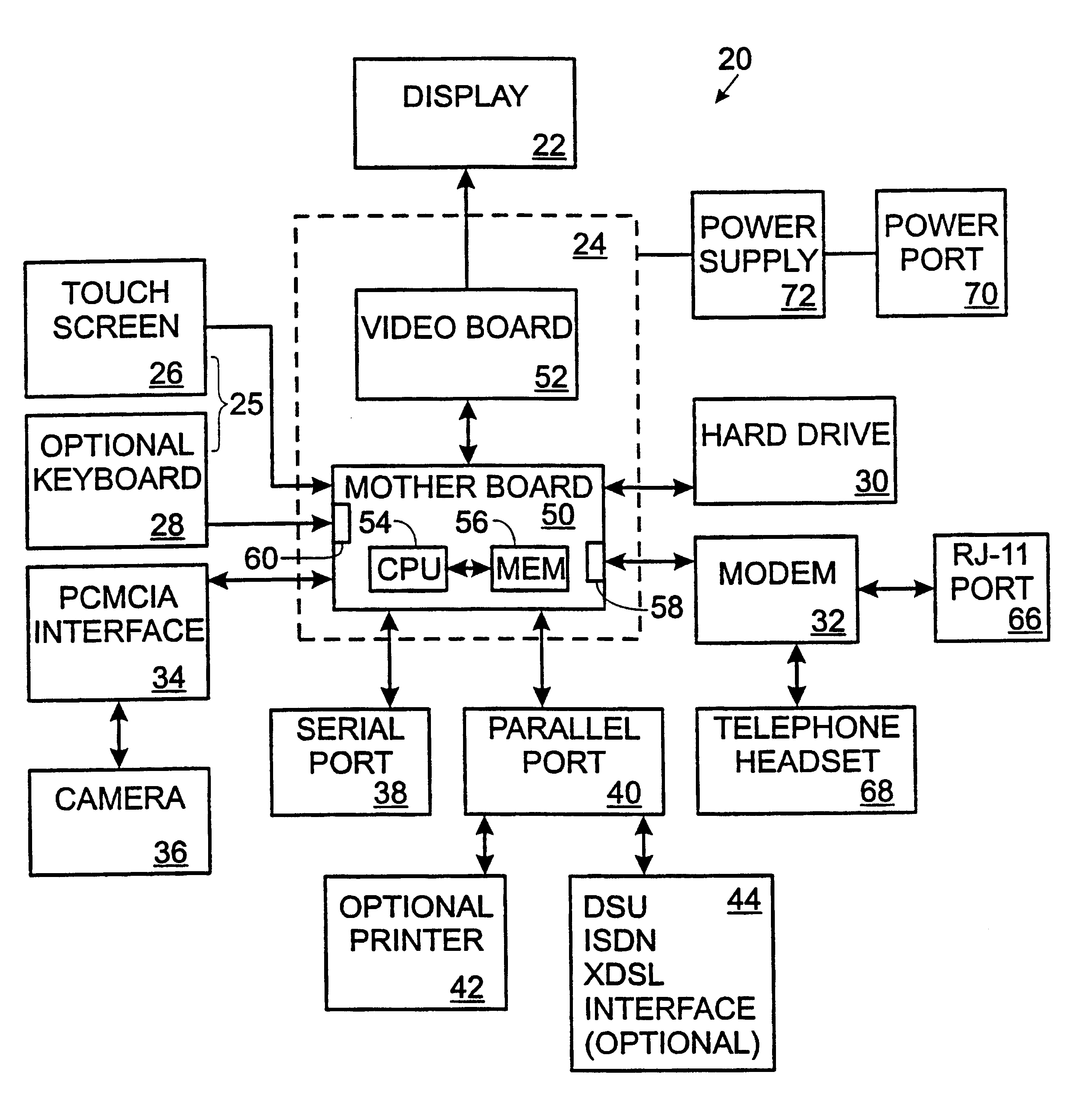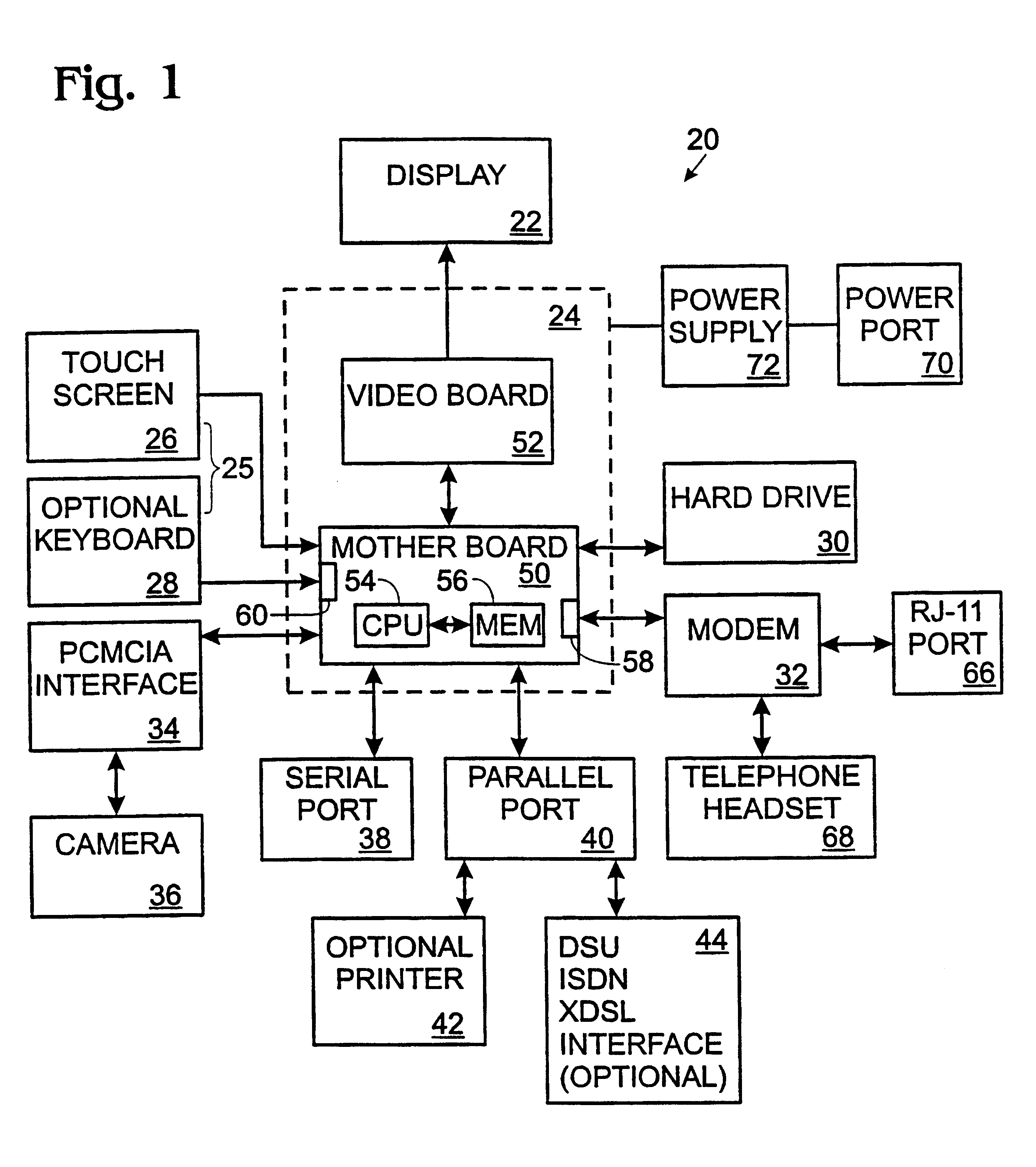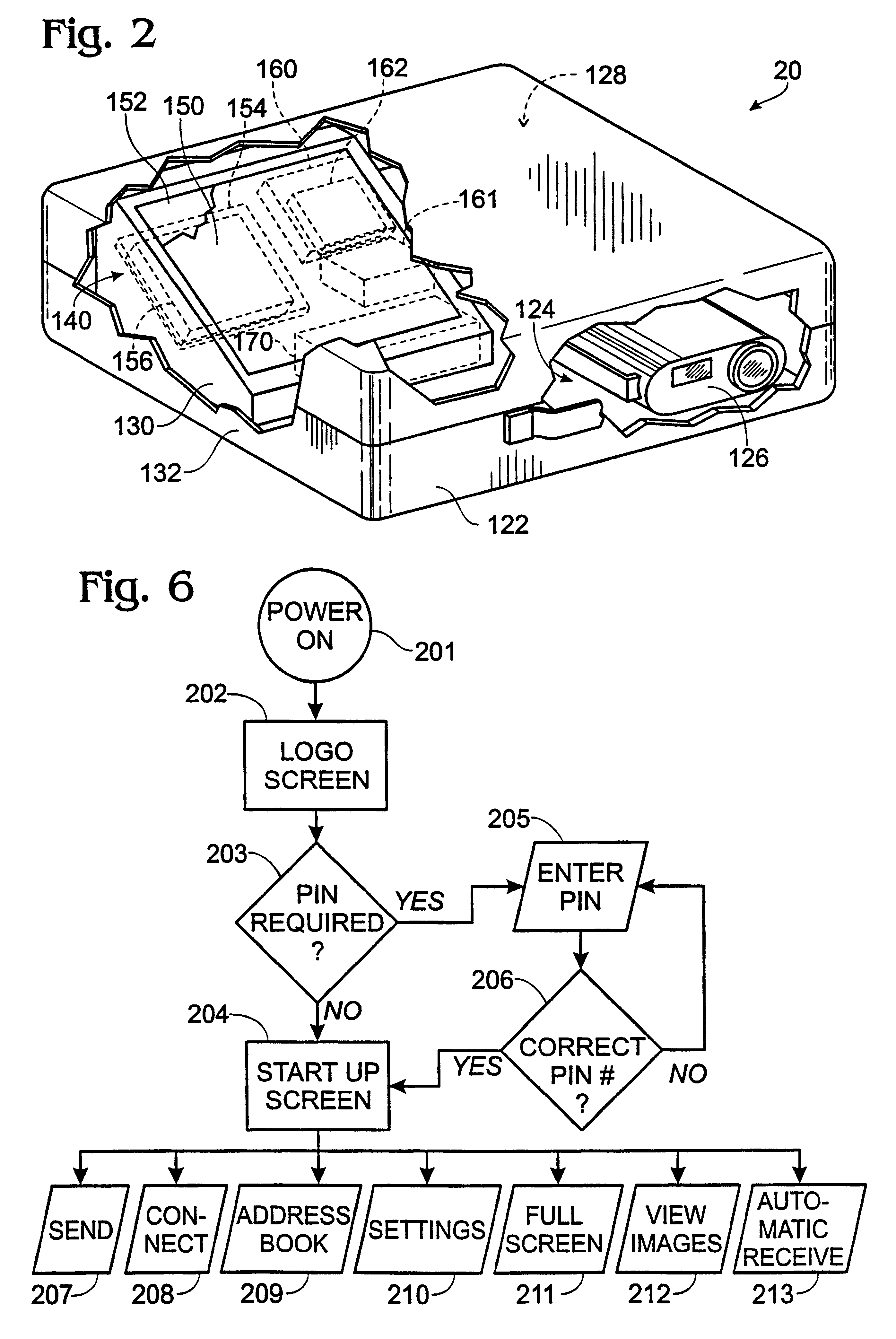Mobile telecommunication device for simultaneously transmitting and receiving sound and image data
a mobile telecommunication device and sound and image technology, applied in the field of telecommunication devices, can solve the problems of wasting valuable treatment time, consuming time and shipping costs, and insufficient communication by phone, so as to eliminate the cost and delay of shipping images and other diagnostic information, and avoid delay. high cost
- Summary
- Abstract
- Description
- Claims
- Application Information
AI Technical Summary
Benefits of technology
Problems solved by technology
Method used
Image
Examples
Embodiment Construction
FIG. 1 is a block diagram illustrating an implementation of a mobile telecommunication unit 20 designed according to the invention. The unit 20 includes a display 22, a unit controller 24, a user input device 25 (touch screen 26, and optional keyboard 28), a secondary storage device (hard drive 30), and a modem 32. The unit 20 also includes a number of input / output devices including a camera interface 34 for connecting a camera 36 to the unit controller 24, a serial port 38, and a parallel port 40. The parallel port enables a variety of devices to be connected to the unit including a printer 42, or an interface 44 for ISDN, DSL (Digital Subscriber Line), or digital modem.
The unit controller 24 is comprised of a motherboard 50 and a video board 52 for controlling the display 22. A central processing unit (CPU) 54 and local memory unit 56 are mounted to the motherboard 50, which is implemented using an ISA / PC 104 board from Advanced Computer Solutions, Inc. The CPU 54, an 80 / 486-DX4 b...
PUM
 Login to View More
Login to View More Abstract
Description
Claims
Application Information
 Login to View More
Login to View More - R&D
- Intellectual Property
- Life Sciences
- Materials
- Tech Scout
- Unparalleled Data Quality
- Higher Quality Content
- 60% Fewer Hallucinations
Browse by: Latest US Patents, China's latest patents, Technical Efficacy Thesaurus, Application Domain, Technology Topic, Popular Technical Reports.
© 2025 PatSnap. All rights reserved.Legal|Privacy policy|Modern Slavery Act Transparency Statement|Sitemap|About US| Contact US: help@patsnap.com



